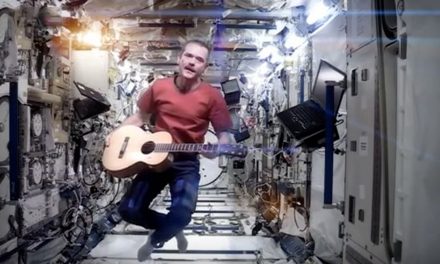
University of Birmingham Professor Bob Stone is working on creating virtual reconstructions of well-known places of natural beauty from all over the world. ©naturevideo, www.nature.com/nature
Walking was a favored activity among many of our nation’s greatest nature writers and thinkers—Benjamin Franklin, Henry David Thoreau, John Muir and Albert Einstein, to name just a few—relied on daily strolls to enhance their creativity and aid their thought processes. Most of them preferred to amble in as rural a setting as possible.
In recent years, several research studies have corroborated what those great philosophers seemed to know intuitively: that time spent in natural environments offers several health benefits, including lowering the risk for heart disease and even lessening the symptoms of attention deficit disorder. But what if you are physically unable to take a walk outside, due to limited mobility or hospital confinement?
Professor Robert Stone, chair of Interactive Multimedia Systems at the University of Birmingham in the United Kingdom, thinks he may have a solution for those who may not be able to perambulate in the great outdoors. For the past few years, he has been working on creating computer simulations that will take users on interactive walks through nature so that anyone can get outside—virtually—at any time.

A computer simulation will take users on interactive walks through nature so that anyone can get outside—virtually—and watch a sunset. ©naturevideo, www.nature.com/nature
For example, using Stone’s software, people will virtually be able to walk along a coastal beach and footpath, sit down on the sand, listen to the waves and birdsong, watch the sunrise and sunset and—soon, hopefully—even experience the smells of the seascape. Professor Stone’s goal is that his virtual walks will give people some of the same health benefits that walks through nature in the real world do.
Watch the video below. In it, Daniel Cressey, a London-based reporter for the weekly science journal Nature, takes a trip to the University of Birmingham for a walk through one of Professor Stone’s virtual worlds. While Cressey reports that he does feel surprisingly relaxed after his virtual walk, it still is not a perfect substitute for the real thing—yet, anyway.
Here’s to finding your true places and natural habitats,
Candy



































I think this would be a great healer for someone that is hospitalized. Imagine letting your mind go someplace else, away from pains and worry. I think the virtual walk could have great restorative qualities.
I like the idea of Middle Earth, the Moon, Mars or even walking where we cannot here on earth: The bottom of the ocean for example. But as far as taking a walk on the surface, where I can, I would rather do it the old fashion way. I have no bears where I am, but lots of mozzies, so I need some spray too. 🙂
Very interesting. It opens the doors in my mind to many things, thanks for sharing. While I was skeptic, think of those who DON’T have the chance to get out every day like we do.!!!!!
Hi Candice, thanks for sharing this interesting article. In my opinion it is not possible to include all the benefits possible to have walking through nature, even if known technologies are advanced, it is possible to feel the same only if you have already visited a place before. I guess our brain can remember smells and feelings we had while visiting those places 🙂
This would be interesting if a version was created that would allow for walks on the moon or Mars.
It’s so hard to believe that we could match the great rewards of a Nature Walk. But, perhaps if ill, or unable to manage our way up and down trails, a virtual walk that appealed to all the senses might help fill the gap of not being immersed in nature.
This idea seems fascinating. But can you feel awe (what is most often the core element of satisfaction you get from outdoor experiences) without leaving the room?
Would be fine for people that are detached from nature but Brian is right, something would be missing. For me it would be the spirit of nature that would be missing. I’ll take the bear spray.
Real bear spray for me please.
Kinda Sorta, But Not Really???
Quite an interesting project Candice, one that we need to follow.
thanks, most refreshing
I think it’s the beginning of something that is going to be very helpful or useful for many people,
Just to know it is fake would detract from the experience. Although you could eventually program in any experience you want, nothing would be left to chance. Where this might be handy is in education. On the other hand, I would be interested in one of these with the Yellow Brick Road or through Middle Earth. It would be interesting trading my bear spray for dragon spray.
Nope, it doesn’t do it for me – I need the sounds, the smells and touch 🙂